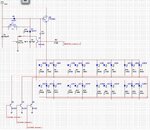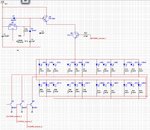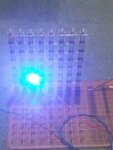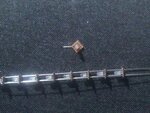boylesg
Advanced Member level 4

- Joined
- Jul 15, 2012
- Messages
- 1,023
- Helped
- 5
- Reputation
- 10
- Reaction score
- 6
- Trophy points
- 1,318
- Location
- Epping, Victoria, Australia
- Activity points
- 11,697
I am toying with the idea of using this circuit to supply and control the columns of an RGB LED cube.
My idea behind the LM317 part of the circuit is to mitigate the voltage drops across the transistors, i.e. so I can adjust the voltage supplied to the common anodes of the RGB LEDs so that it is exactly 5V despite the transistors I am using the control the LEDs.
I can't supply 12V straight to the columns because that will prevent the TLC4950 channels from turning off the LEDs .
I can't use 5V because the transistor reduce the voltage at the RGB anodes to somewhat less than 5V.
I am intending to use an ATX power supply for the logic and LED supplies.
Any comments or suggested changes?

My idea behind the LM317 part of the circuit is to mitigate the voltage drops across the transistors, i.e. so I can adjust the voltage supplied to the common anodes of the RGB LEDs so that it is exactly 5V despite the transistors I am using the control the LEDs.
I can't supply 12V straight to the columns because that will prevent the TLC4950 channels from turning off the LEDs .
I can't use 5V because the transistor reduce the voltage at the RGB anodes to somewhat less than 5V.
I am intending to use an ATX power supply for the logic and LED supplies.
Any comments or suggested changes?






